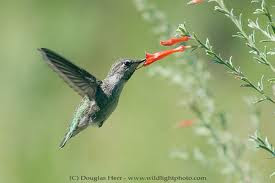
Dig a hole about twice the width of the shrub’s root ball. Top soil (top layer you first dig out) in separate pile from sub soil (harder and poorer in quality). Fork up the base of the hole (it allows water to drain and roots to penetrate soil). Spread some manure over the hole, covered with 15 cm of topsoil.
Mix the top soil with some manure and a couple of handfuls of bonemeal. Fork up the base and the sides of the hole.
Ease the plant out of its container, carefully loosening roots that have compacted whilst being in the container and place the shrub in the prepared hole. You can use a cane as a guideline, laying it across the hole, bearing in mind that you need to plant in a slight dip surrounded by raised edges for watering purposes during the first two years.
Backfill around the shrub with the top soil, firming the soil in stages to prevent air pockets from forming. Tread the surface around the shrub down into a dish shape so that water does not run off before it has time to penetrate the soil.
Prune any diseased or damaged wood back to healthy growth and cut back any inward-growing or crossing stems to an outward-growing shoot or bud. Water thoroughly.
You should also remove any very long, weak or straggly stems, or those that mar the overall balance of the framework.
Bibliography: RHS Encyclopedia of Gardening













